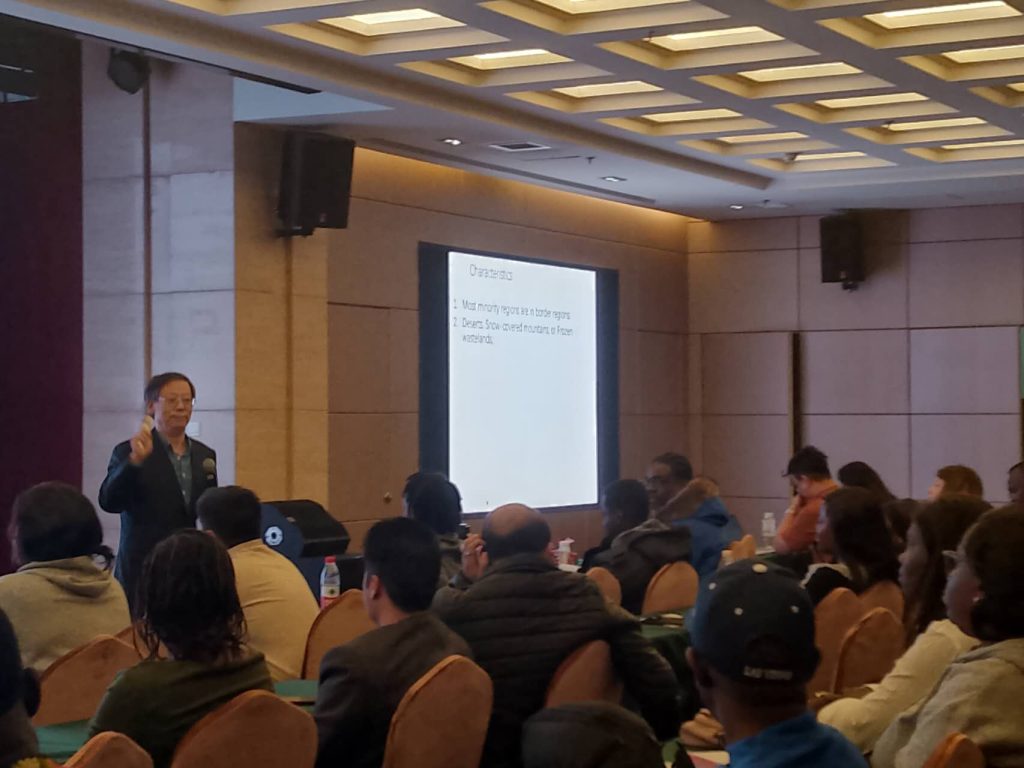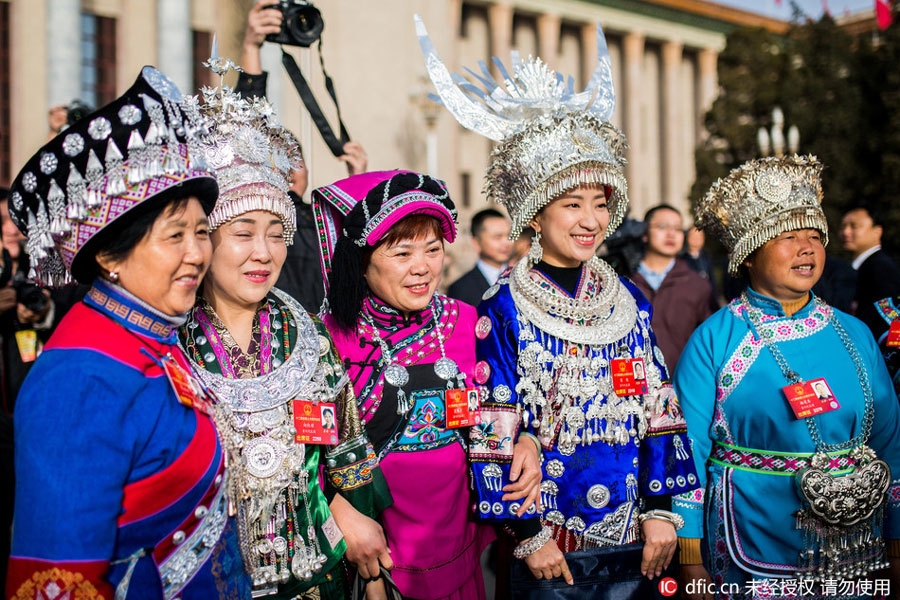CHINA’S national unification policy and implementation strategies, which have proven effective in keeping the multi-ethnic and multi-racial society together as one nation since 1929, can only serve as a valuable guide to ethnic conflict-affected countries as different countries have different problems.
This was expressed by the Professor of Foreign Studies at the Minzu University of China, Keyong He during a Question-and-Answer time when lecturing a group of foreign journalists on the ‘Development of Ethnic Minority Areas in China – Policy and Practices.’ The journalists from the Asia-Pacific region, Africa and Europe are on a three-month study tour in China, hosted by the Chinese International Press Communication Center.
Professor He lectured on the subject of “Development of Ethnic Minority Areas in China – Policy and Practices.”
In his lecture, Professor He highlighted the ethnic diversity of China, a nation made up of 56 ethnic groups with 23 provinces, including Taiwan, five autonomous regions (Guangxi, Inner Mongolia/Ningxia, Tibet (Xizang) and Xinjiang) and two special administrative regions ( Hong Kong and Macau) and the national unification policy and implementation strategies which the Chinese government introduced to ensure the harmonious co-existence of its people.
He said the major ethnic group is Han makes up 91.6 percent (over 4 billion) of the Chinese population, whilst the other 55 ethnic minority groups called ‘ethnic nationalities’ make up the remaining 8.4 percent of the population. The largest of these ethnic minority groups is the Zhuang people in South China, totalling 16 million. The smallest minority group is called Lhoba with a population of around 3,000.

Professor He said the Han have their own spoken and written language known as the Mandarin, which is the common or universal language in China and which the Hui and Manchu ethnic groups also use, whilst the remaining 53 ethnic groups have their own spoken languages.
He said the 55 minority ethnic groups were identified under a national identification process undertaken by the Chinese government from 1950 to 1987 to end a confusion in naming them and to safeguard their equal rights as prior to the national identification process, more than 400 ethnic minority groups were claimed to exist and that the 56 ethnic groups were categorised in five racial groups called the Han, Man, Mongolian, Hui and Tibetan.
Professor He said China’s policy on ethnic affairs since the 50s saw the introduction of a ethnic regional autonomy system with relevant laws, rules and regulations to ensure national unity and ethnic equality, ensure the rights of all ethnic groups to participate in the decision-making process, foster economic development in ethnic minority regions, promote ethnic minority cultures, accelerate development of education in ethnic minority areas and to encourage improved integration of ethnic minority groups into urban areas.
Under the Chinese Law for Ethnic Regional Autonomy that came into effect in 1984 and was revised in 2001, the national government has the obligation to help develop the autonomous regions under the national plan for economic and social development by providing appropriate funding for key projects that enhance the infrastructure, upgrade the economic structure and diversify the local industries, by ensuring a ‘privilege’ policy towards ethnic groups in terms of taxation, banking interest subsidy, family planning and education and so forth, he said.
In 1998, under a State Campaign to boost social and economic development of regions along China’s land borderline, the National Ethnic Affairs Commission started work on improving the lives of the ethnic people who comprise 48-percent of the 21 million residents of 135 counties along the borderline, Professor He added.
Professor He said by 2005, the government spent at least 15 billion yuan in the borderline areas through this programme, benefitting 21 million people and that key projects to accelerate the development of the areas of ethnic groups with a small population amounted to 5 billion yuan RMB.
“Favourable policies and direct financial investment were granted to improve infrastructure and public facilities, develop education, promote literacy and boost trade and nurture industries.
” Under the Development of the West Programme in 2000, the Chinese government’s investment at various levels in the vast land where 71 per-cent of the ethnic minority inhabit, which cover all five autonomous regions and ten provinces, reached a trillion RMB. Guizhou, for example, built 21,000 bridges, linking high-speed highway with 275 mega bridges, introduced high-speed express to every county.”

He said in terms of education for the minority ethnic groups, the Chinese government introduced a policy providing some minority ethnic areas with 13 to 15 years of free education, an additional 3 to 6 years of free education to the nine years of free compulsory education in China and this policy accelerated the literacy rate amongst the minority ethnic groups to more than 80 per-cent by 2003.
And since 2012, Professor He added that President Xi advocated that through interaction, exchange and integration amongst ethnic groups, including Han, the Chinese government has worked hard to forge the sense of community of a Chinese nation that bonds all ethnic groups with a shared future.
When asked during Question-and-Answer time, if he could recommend Chinese government’s approach towards national unification to countries facing challenge of ethnic conflict, Professor He said, “It is important for any country facing the issue of ethnic conflict to have a bigger idea. Secondly, very often you will find that conflicts rise out of the inequality in distribution of resources and very often, you would have one dominant tribe who governs for many years without ensuring the equal rights of all other tribes. So to recognise the equal rights of all takes a lot of courage. It should be built on the consensus of all groups if you are to ensure national unity and boost the development of the country. You have to take care of the equal rights of all groups.
‘You know China has proved that the ethnic minority rights and privileges were more stressed [emphasised] in some developments, but the thing is that sometimes such kind of stress [emphasis] is crucial, particularly during a certain historical period of time. If all areas are developed more or less equal, then such kind of privileges could be reduced in the future.
“But for some period of time like in China, we have to do that and now such kind of privileges could be reduced. They could be lowered, but not wiped out because you still have some population who need such treatment.
“So I would say equality in terms of benefits, in terms of legal rights, in terms of laws and in terms of law-enforcement is crucial. That is why it is important that all sides [in any conflict] sit together [with the government] and come up with a consensus.
“Of course different countries have different problems and sometimes you need to have very strong leader to ensure a consensus when there are always fights without coming to any resolution,” Professor He elaborated.
By DELI-SHARON OSO
In Beijing, China









